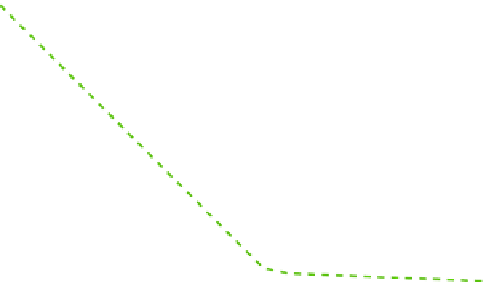Biomedical Engineering Reference
In-Depth Information
0.18
5.2
5
0.16
0.14
4.8
0.12
4.6
0.1
4.4
4.2
0.08
0.06
4
0.04
13.
3.8
10
10.5
11
11.5
12
12.5
13
DG Gain (dB)
0.2
0.25
0.3
0.35
0.4
0.45
0.5
0.55
0.6
0.65
Spacing in
λ
Fig. 6
Variations of maximum ratio combined (MRC) diversity gain (DG), power imbalance
and correlation coefficient with respect to variation in spacing between on-body diversity branch
antennas (when diversity branch antenna is on wrist)
Table 8
Off-body downlink diversity at Loc. 2 (at 1 m distance between transmitter (Tx) and
receiver (Rx), Loc. 2 is shown in Fig.
3
) at 0.34
λ
0
spacing between diversity branch Rx in an indoor
environment
Links
Uplink
Downlink
Difference
MRC
ρ
e
I
MRC
ρ
e
I
MRC
ρ
e
I
Chest
12
0.061
3.08
9.53
0.10
6.31
2.47
0.039
3.23
Head
12.67
0.067
2.51
11.31
0.101
5.13
1.36
0.168
2.62
Wrist
11.90
0.085
4.03
9
0.136
5.74
2.90
0.051
1.71
Ankle
11
0.114
4.63
9.11
0.163
4.11
1.89
0.049
0.52
Back
14.42
0.030
1.54
13.49
0.024
2.34
0.93
0.006
0.8
MRC and I are in dB units
I
power imbalance,
MRC
maximum-ratio combining
there difference for both uplink and downlink diversity, when subject was at Loc. 2
(Loc. 2 is shown in Fig.
3
), for five on-body Rx locations. By swapping the Tx and
Rx antennas, the scattering environment surrounding the diversity branch antenna
changes and this leads to difference in results shown in the table.
There may be some repeatability errors in DG and power imbalance as well. DG
is always higher when diversity branch antennas are on the body (uplink diversity).
This is due the fact that reflections from human body parts are also playing role in
improving DG. Hence, uplink diversity seems to be more useful than the downlink
diversity.



































































































Search WWH ::

Custom Search